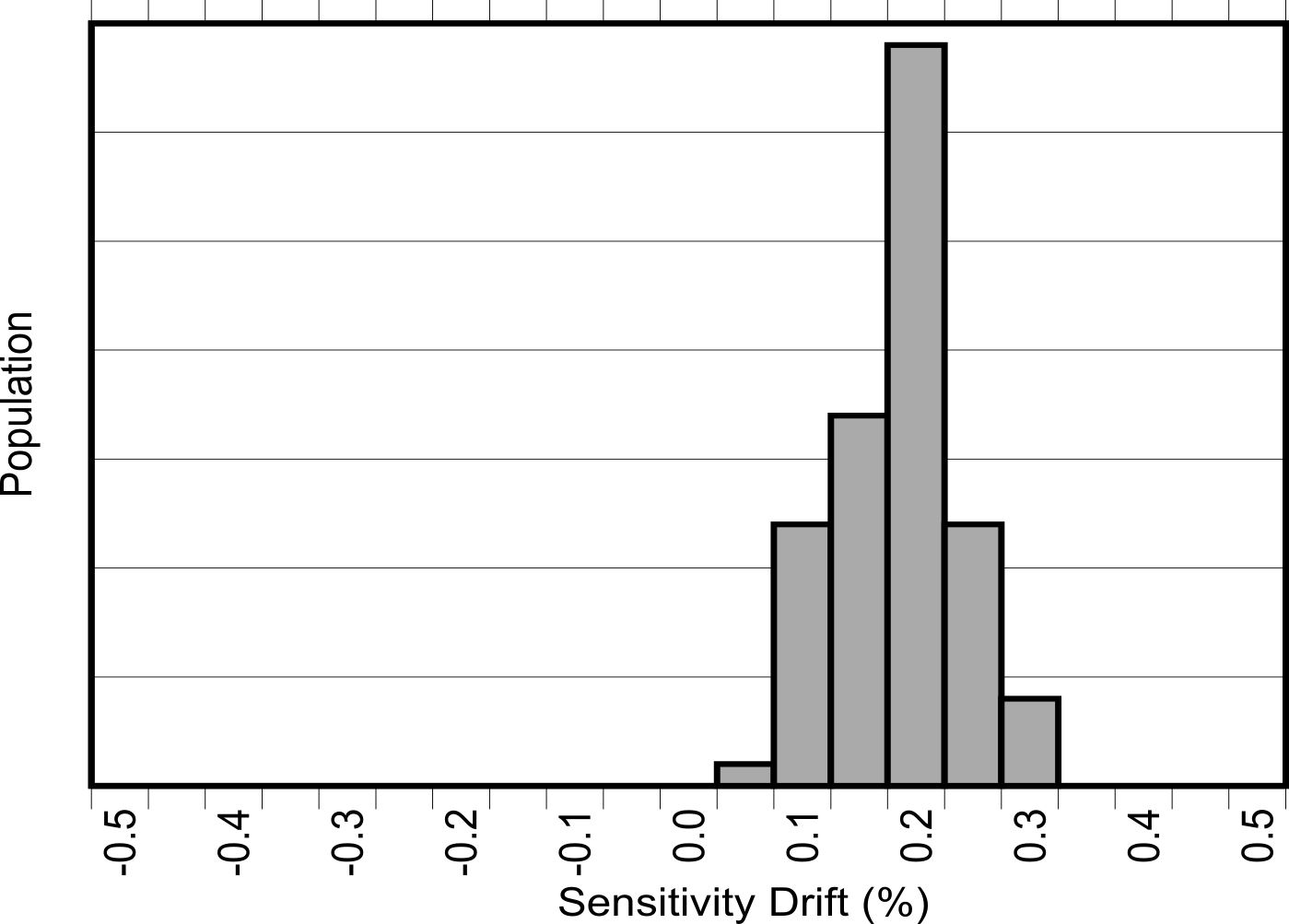JAJSRU9B October 2023 – August 2024 TMCS1133
PRODUCTION DATA
- 1
- 1 特長
- 2 アプリケーション
- 3 概要
- 4 Device Comparison
- 5 Pin Configuration and Functions
- 6 Specifications
- 7 Parameter Measurement Information
- 8 Detailed Description
- 9 Application and Implementation
- 10Device and Documentation Support
- 11Revision History
- 12Mechanical, Packaging, and Orderable Information
8.3.3.2 Lifetime and Environmental Stability
In addition to large thermal drift, typical magnetic current sensors suffer an additional 2% to 3% drift in sensitivity due to aging over the lifetime of the device. The same proprietary compensation techniques used in the TMCS1133 to reduce temperature drift are also used to greatly reduce lifetime drift due to aging from stress and environmental conditions especially at high operating temperatures. As shown in the Electrical Characteristics, the TMCS1133 has industry leading lifetime sensitivity drift realized after Highly Accelerated Stress Tests (HAST) at 130°C and 85% relative humidity (RH) during standard three lot AEC-Q100 qualifications. Low sensitivity and offset drift within the bounds specified in the Electrical Characteristics are also observed after 1000 hour, 125°C high temperature operating life stress tests are performed as prescribed by AEC-Q100 qualifications. These tests mimic typical device lifetime operation, and show device performance variation due to aging is vastly improved compared with typical magnetic current sensors. Figure 8-2 and Figure 8-3 show the sensitivity and offset drift after a 1000 hour, 125°C high temperature operating life stress test as specified by AEC-Q100. Device operational performance varies over the lifetime of the device. This test mimics typical device lifetime operations and shows the likelihood of the device vastly improving performance compared to typical magnetic sensors.
 Figure 8-2 Sensitivity Error Drift After AEC-Q100 High
Temperature Operating Life Stress Test
Figure 8-2 Sensitivity Error Drift After AEC-Q100 High
Temperature Operating Life Stress Test Figure 8-3 Input-Referred Offset Drift After AEC-Q100 High
Temperature Operating Life Stress Test
Figure 8-3 Input-Referred Offset Drift After AEC-Q100 High
Temperature Operating Life Stress Test